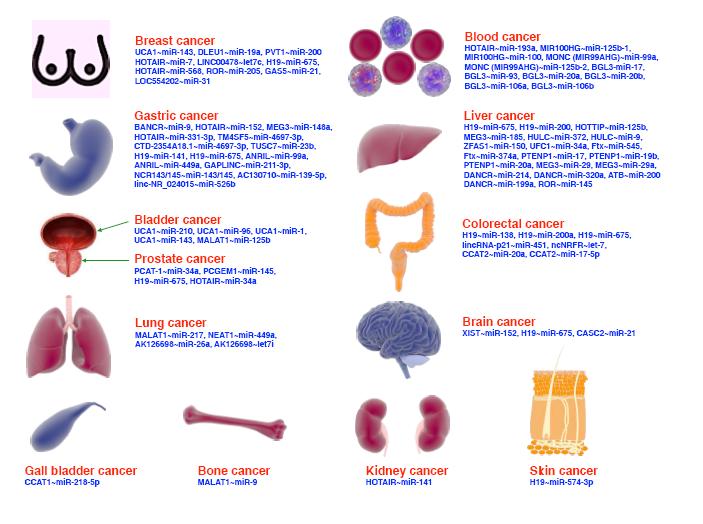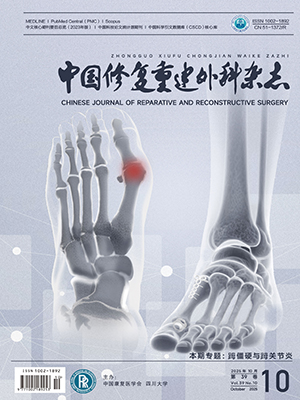| 1. |
Archavlis E, Palombi D, Konstantinidis D, et al. Pathophysiologic mechanisms of severe spinal cord injury and neuroplasticity following decompressive laminectomy and expansive duraplasty: A systematic review. Neurol Int, 2025, 17(4): 57. doi: 10.3390/neurolint17040057.
|
| 2. |
Chopra M, Kumar H. Navigating the complexities of spinal cord injury: an overview of pathology, treatment strategies and clinical trials. Drug Discov Today, 2025, 30(6): 104387. doi: 10.1016/j.drudis.2025.104387.
|
| 3. |
Gluck L, Gerstein B, Kaunzner UW. Repair mechanisms of the central nervous system: From axon sprouting to remyelination. Neurotherapeutics, 2025. doi: 10.1016/j.neurot.2025.e00583.
|
| 4. |
Troiani Z, Chipman DE, Ryan TJ, et al. Efficacy of mesenchymal and embryonic stem cell therapy for the treatment of spinal cord injury: A systematic review and meta-analysis of human studies. Global Spine J, 2025: 1240682966. doi: 10.1177/21925682251345450.
|
| 5. |
Li Z, Yu H, Wang Z, et al. Recent advances in nanotechnology for repairing spinal cord injuries. Biomaterials, 2025, 323: 123422. doi: 10.1016/j.biomaterials.2025.123422.
|
| 6. |
Han C, Jiao J, Gong C, et al. Multidimensional exploration of hydrogels as biological scaffolds for spinal cord regeneration: mechanisms and future perspectives. Front Bioeng Biotechnol, 2025, 13: 1576524. doi: 10.3389/fbioe.2025.1576524.
|
| 7. |
Shen H, Chen X, Li X, et al. Transplantation of adult spinal cord grafts into spinal cord transected rats improves their locomotor function. Sci China Life Sci, 2019, 62(6): 725-733.
|
| 8. |
Zhao X, Gu R, Zhao Y, et al. Adult spinal cord tissue transplantation combined with local tacrolimus sustained-release collagen hydrogel promotes complete spinal cord injury repair. Cell Prolif, 2023, 56(5): e13451. doi: 10.1111/cpr.13451.
|
| 9. |
Canavero S, Lebenstein-Gumovski MV, Kim CY. The rise of transplantation neurosurgery: Spinal cord, eye, brain. Surg Neurol Int, 2024, 15: 478. doi: 10.25259/SNI_945_2024.
|
| 10. |
Liu Z, Ren S, Fu K, et al. Restoration of motor function after operative reconstruction of the acutely transected spinal cord in the canine model. Surgery, 2018, 163(5): 976-983.
|
| 11. |
Olby NJ, De Risio L, Muñana KR, et al. Development of a functional scoring system in dogs with acute spinal cord injuries. Am J Vet Res, 2001, 62(10): 1624-1628.
|
| 12. |
Shen H, Wu S, Chen X, et al. Allotransplantation of adult spinal cord tissues after complete transected spinal cord injury: Long-term survival and functional recovery in canines. Sci China Life Sci, 2020, 63(12): 1879-1886.
|
| 13. |
Sajjadi S, Shayanfar A, Kiafar F, et al. Tacrolimus: Physicochemical stability challenges, analytical methods, and new formulations. Int J Pharm X, 2024, 8: 100285. doi: 10.1016/j.ijpx.2024.100285.
|
| 14. |
Daneri-Becerra C, Patiño-Gaillez MG, Galigniana MD. Corrigendum to “Proof that the high molecular weight immunophilin FKBP52 mediates the in vivo neuroregenerative effect of the macrolide FK506” [Biochem. Pharmacol. 182 (2020) 114204]. Biochem Pharmacol, 2024, 220: 116018. doi: 10.1016/j.bcp.2024.116018.
|
| 15. |
Khachatryan Z, Haunschild J, von Aspern K, et al. Ischemic spinal cord injury-experimental evidence and evolution of protective measures. Ann Thorac Surg, 2022, 113(5): 1692-1702.
|
| 16. |
Bitar Alatorre WE, Garcia Martinez D, Rosales Corral SA, et al. Critical ischemia time in a model of spinal cord section. A study performed on dogs. Eur Spine J, 2007, 16(4): 563-572.
|
| 17. |
Yang W, Wu QQ, Yang L, et al. Awake rabbit model of ischemic spinal cord injury with delayed paraplegia: The role of ambient temperature. Animal Model Exp Med, 2024, 7(5): 732-739.
|
| 18. |
Bosmia AN, Hogan E, Loukas M, et al. Blood supply to the human spinal cord: part Ⅰ. Anatomy and hemodynamics. Clin Anat, 2015, 28(1): 52-64.
|
| 19. |
Mazensky D, Flesarova S, Sulla I. Arterial blood supply to the spinal cord in animal models of spinal cord injury. A review. Anat Rec (Hoboken), 2017, 300(12): 2091-2106.
|
| 20. |
Lebenstein-Gumovski M, Rasueva T, Zharchenko A, et al. Chitosan/PEG-mediated spinal cord fusion after complete dorsal transection in rabbits-functional results at 30 days. Surg Neurol Int, 2023, 14: 423. doi: 10.25259/SNI_927_2023.
|
| 21. |
Lebenstein-Gumovski M, Zharchenko A, Rasueva T, et al. PEG-chitosan (Neuro-PEG) induced restoration of motor function after complete transection of the dorsal spinal cord in swine. A pilot study. Surg Neurol Int, 2023, 14: 424. doi: 10.25259/SNI_928_2023.
|
| 22. |
Lee J, Hahm SC, Yoo H, et al. Protection of the vascular system by polyethylene glycol reduces secondary injury following spinal cord injury in rats. Tissue Eng Regen Med, 2023, 20(7): 1191-1204.
|
| 23. |
Ren X, Zhang W, Qin J, et al. Partial restoration of spinal cord neural continuity via vascular pedicle hemisected spinal cord transplantation using spinal cord fusion technique. CNS Neurosci Ther, 2022, 28(8): 1205-1217.
|
| 24. |
Alvernia JE, Simon E, Khandelwal K, et al. Anatomical study of the thoracolumbar radiculomedullary arteries, including the Adamkiewicz artery and supporting radiculomedullary arteries. J Neurosurg Spine, 2022, 38(2): 233-241.
|




